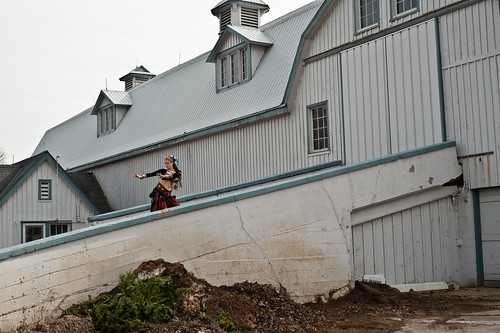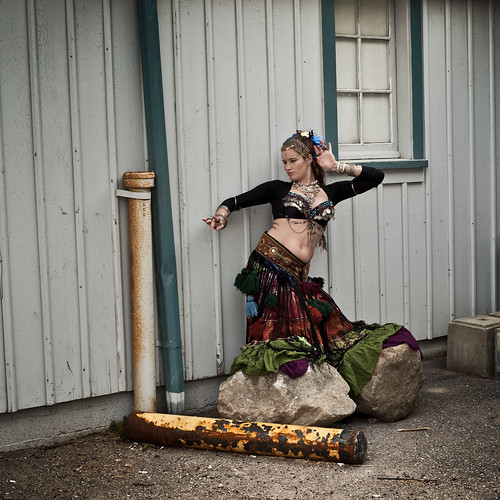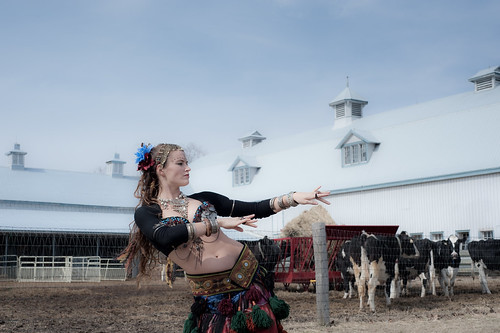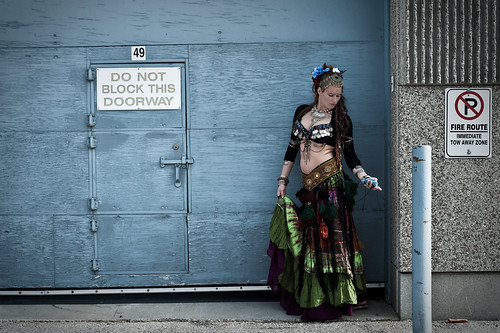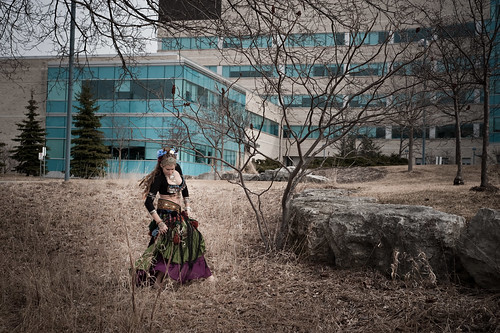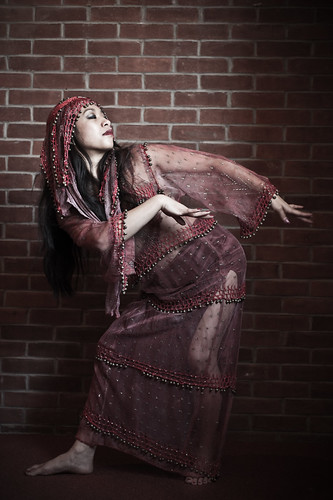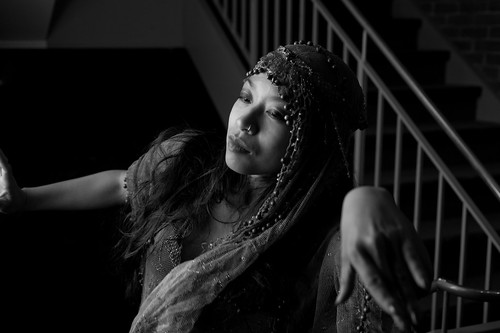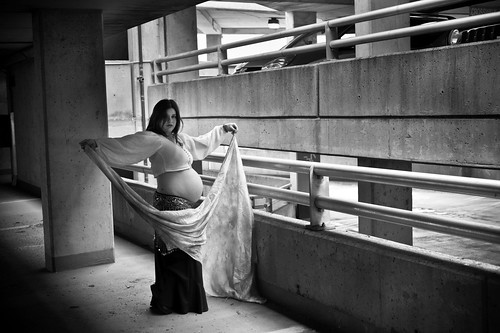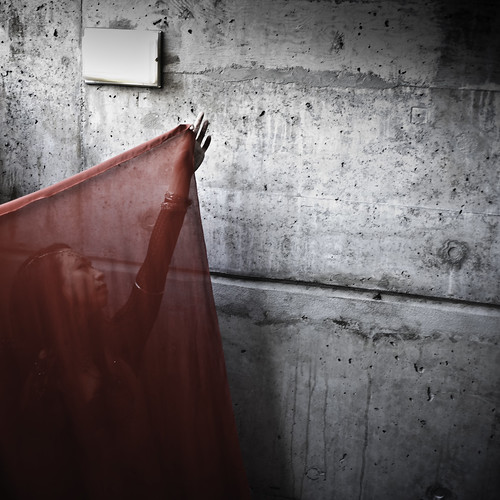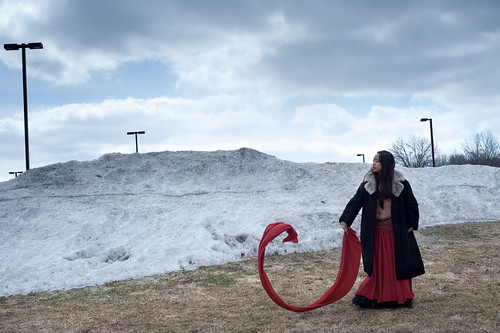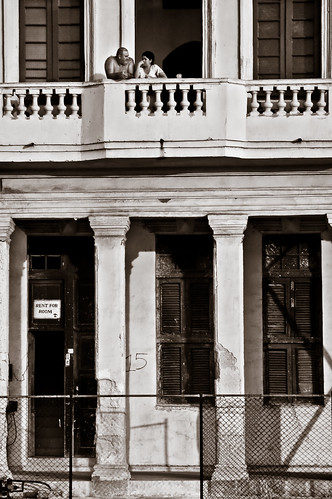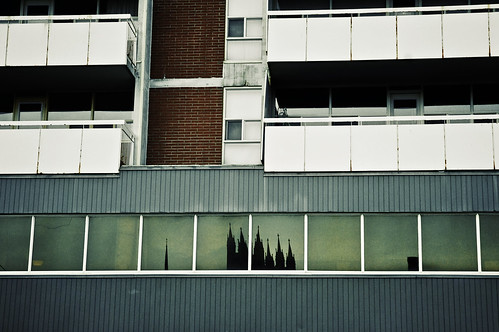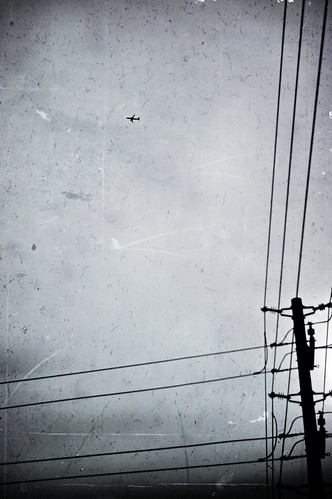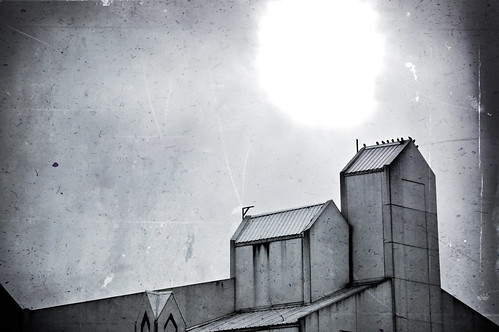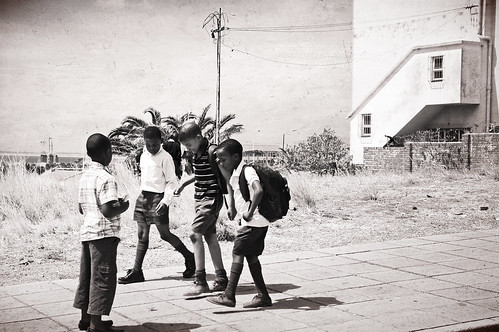When I first started volunteering at the drop-in centre, I made all kinds of assumptions. I figured that everyone who came there must be suffering, they must be at the end of their rope, the most marginalized people in my small town. I thought the drop-in centre was a last resort.
But now I see differently. Certainly some people are at a low point in their lives, I’m sure, but I think a lot of people come for different reasons. Maybe they live alone and come for the home-cooked meals that are just too resource-intensive to make themselves. Maybe they come for the community.
When I started photographing people there, I originally intended to publish the photos with text, with information about the person in the picture and how they came to be at the drop-in centre. But more and more, I’m realizing two things:
1. I can’t really find that out. For one thing, the stories of how we came to be at any particular place and time are complex; it’s never a simple cause and effect. For another, that’s not information people generally share without being asked. And I have no interest in asking things like, “What are you doing here?” since it suggests that “here” is a place you wouldn’t just choose to come. Yet many of us do just choose to go there.
2. Their stories are ultimately irrelevant to me. It really shouldn’t matter whether a person just left an abusive relationship or just got out of jail for bank robbery. And I think posting stories with faces would invite either judgment or pity, and I don’t want to do that.
Last night I talked to my husband about my drop-in centre project, wondering if I might have to take a different approach to achieve what I want to with the images. Some of the responses I get to the photographs are disappointing, like when someone says, “Great picture of a hard life…” or something like that. I don’t want you to see a hard life. I want you to see a life: a human being, plain and simple.
My husband mentioned the concept of ubuntu. He mentioned it specifically in the context of a Zulu saying (which he actually said in Zulu but which I couldn’t attempt to spell here) that is loosely translated as “We are who we are through other people.” The more I think about this, the more I think this is really what I’m trying to convey through my drop-in project. I like the double meaning of the phrase too, that we are who we are because of how other people have treated us and also through how we treat other people. We are no better than our worst treatment of other people.
Later I did a bit of research into ubuntu. Archbishop Desmond Tutu described ubuntu as “the essence of being human. Ubuntu speaks particularly about the fact that you can’t exist as a human being in isolation.”
Nelson Mandela explained it in a way that I think is particularly apt in the context of the drop-in centre with its fairly transient population: “A traveller through a country would stop at a village and he didn’t have to ask for food or for water. Once he stops, the people give him food, entertain him. That is one aspect of Ubuntu but it will have various aspects.” You can see him explaining it in this video.
* * *
I love going to the drop-in centre. I love the conversations I have there. I used to find my camera was a barrier to openness among people. But now I find it can open up conversations, bringing me into contact with people I wouldn’t otherwise approach, and deepening the contacts I already have.
A couple of weeks ago, for example, when I walked in for my shift, it was overcast. I glanced into the smoking area as I opened the door, and three guys I’d seen around but never really spoken to were there. It took me a few steps to register, but the light was amazingly soft, not only from the overcast sky but it also reflected back up from the snow. When I got inside, everything was already taken care of for the meal prep, and nobody was at the counter for coffee. I was feeling brazen that week (Tony Fouhse’s posts about approach really helped me figure out how to approach people to photograph), so I decided to take my camera back outside and ask those guys if they wanted to collaborate on some photos.
I felt really nervous (and a bit like an asshole) just asking them out of the blue, and trying to explain what I’m trying to do, but two of them were game. I started with JP, and put him up against the brick wall. Immediately, he looked at me for direction, a bit nervous, and I froze. “DO SOMETHING, SAY SOMETHING, ANYTHING!” my brain screamed at me, and finally my mouth said, “Why don’t you just take a drag of your smoke?”
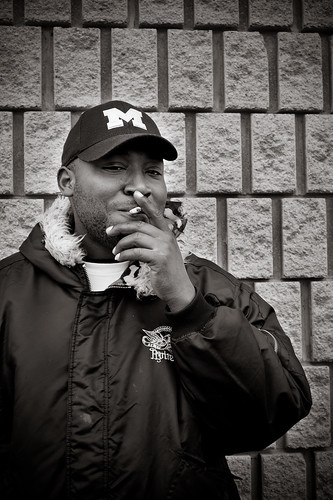
He complied, and by the time he exhaled, his face was relaxed.
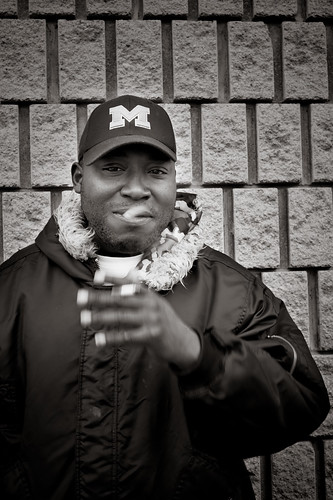
What I find interesting is that at the time, I thought the picture of him exhaling would be the one to go with. But now that I see the actual shots, I like the tension of the first one, with his mischievous and slightly self-conscious smirk, and the knowing tilt of his head.
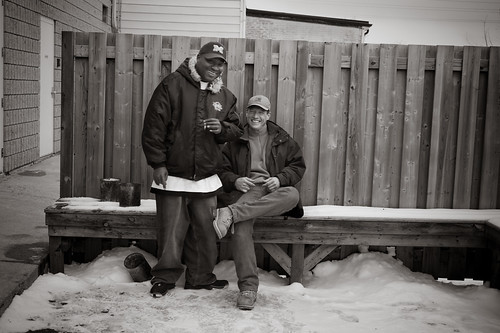
Overall, however, I think maybe I should stick with my usual but much slower approach. My usual approach involves waiting for a rapport to develop with someone, then asking if they want to be involved in my project. It means that my project will never really be a documentary project, not really representative of the people who come to the drop-in centre at all. It will only be a document of the people I’m drawn to, or who are drawn to me, or to having their picture taken if they see me photographing someone else. And that somehow seems more genuine to me anyways.
Just over a week ago, I walked to the drop-in centre on a glorious sunny and mild day – the first day of the year when you could comfortably walk outside without your winter coat. As I was walking across the parking lot, Tony saw me, and said something flattering. I smiled and he called, “Has anyone ever told you you have a beautiful smile?” (Or something like that.)
I had to think. “Well, I think it’s been a long time.”
Anyways, we talked, about the weather, about my age and experience, and whether I had to come here for some reason. He seemed impressed that I just volunteer there because I want to, and he shook my hand. The subject of photography came up naturally, and when he said he liked pictures, I told him about my project. He wasn’t just willing, he was probably the most enthusiastic person I’ve photographed. He performed, he rode his bike with the coloured ribbons on the handlebar, and put on the fur hat he had just found.


I also had a great conversation with a man who used to be into photography. He asked me if I’d bracketed my shots, and I had to confess that I hadn’t. He once had a rolleiflex and a full darkroom and everything, but over the years he’s had to sell most of his stuff. He said it was hard to keep it while he was on the streets. He still has some prints, though, and promised to bring some in next time I come.
I can’t figure out exactly what it is that I love about the place. Something about the blurred lines between the served and serving, and about the sense of community that exists among a pretty transient population. There are a few regulars, but there’s a lot of people you won’t see for weeks or months, then they’ll show up for a while, then disappear again. I never know if the disappearances are a good thing: they could be working or have a new place to live or have left town; or they could be relapsed, in jail or the hospital. And there’s no way to tell unless or until you see them again.

